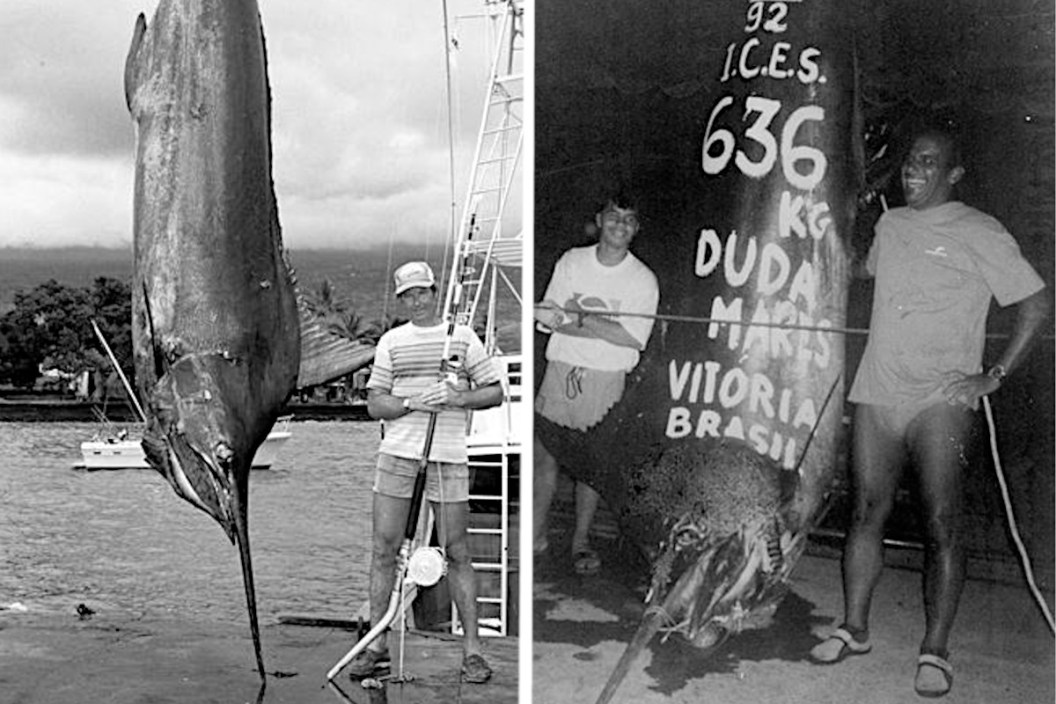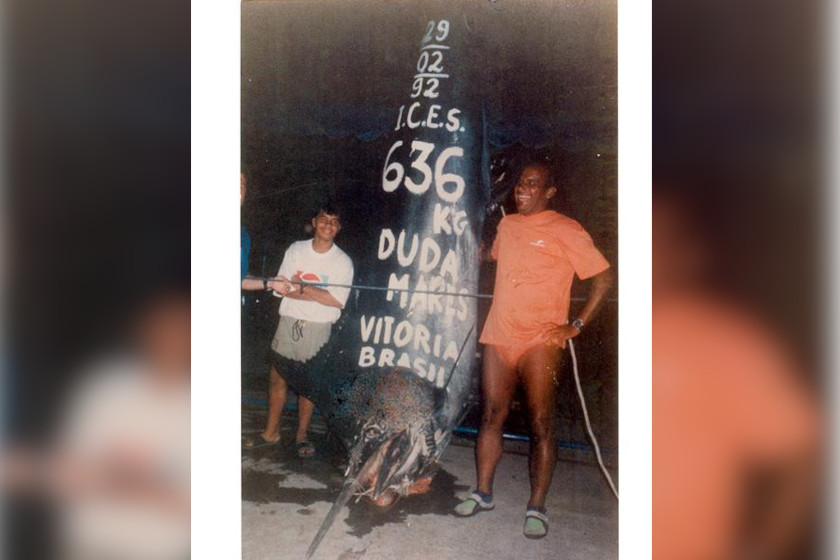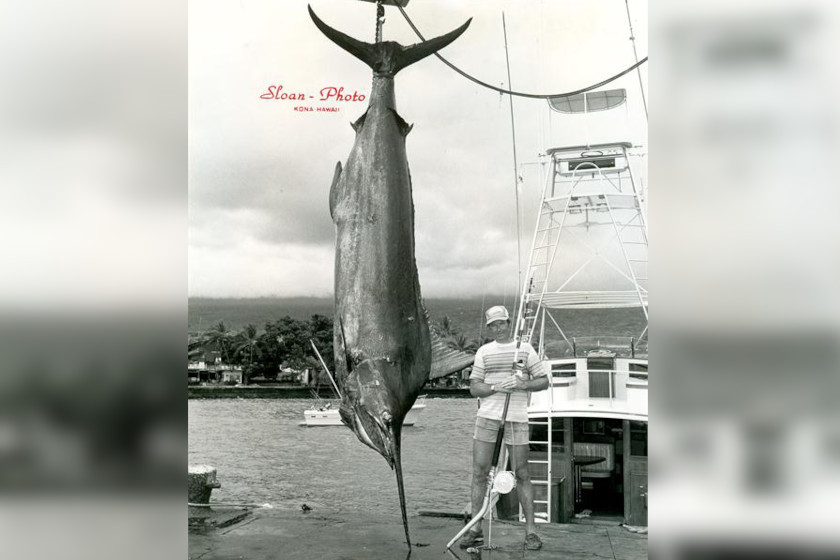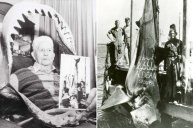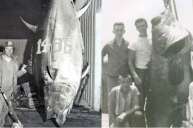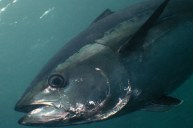When it comes to billfish, the magnificent blue marlin is a favorite of anglers everywhere. Beloved the world over for its size, speed, and fight, there's nothing quite like battling one of these beasts on a traditional rod and reel. The International Game Fish Association recognizes world records for both the Atlantic and Pacific blue marlin variants even though the two fish are sometimes considered one and the same. There are some small color differences between the two subspecies. In any case, the two all-tackle world records have each stood for over 30 years and counting at this point. Mostly because landing a "grander" is so rare, it is very likely the two world records will stand for many more decades to come.
In fact, it's probably not completely out of the realm of possibility to say that both record holders may see their names cemented at the top of the record books forever. It may sound extreme to say that, but not after you learn more about how the sport fishing world has changed, how the attitudes of anglers have changed, and how conservation is becoming an increasing part of any blue marlin catches. This is more than the story of two big fish, it's the story of the natural evolution of marlin fishing and angling in general.
The Atlantic Blue Marlin World Record
The cool thing about this record was the fact that the IGFA all-tackle world record annihilated the old record of 1,282 pounds by a staggering 120 pounds! It's not often you'll see a record fall by a margin that large. Perhaps it was appropriate that Paulo Amorim's large catch happened on February 29, 1992, "Leap Day," because his catch was such a "leap" over the previous record that was set back in 1977. In any case, the IGFA notes that Amorim was an extremely experienced marlin angler. However, even he wasn't ready for a fish of these proportions.
Amorim was trolling a Moldcraft lure off the coast of Victoria, Brazil. He was using a Penn International 80 STW reel and a Capt. Harry's rod loaded with 80-pound test line when the largest blue marlin he'd ever encountered hammered his offering. The battle was not an easy one. Amorim had nearly 1,000 yards of line on his reel, and the giant fish almost spooled it six times!
"The fight lasted an hour and a half, he hurt me so much that there was an hour that I thought: boy, I hope the line breaks so the fish goes away," Amorim said later.
When the big marlin finally relented, Amorim was faced with another problem. The giant fish was too big for his boat! Amorim and his crew had no choice other than to lash the huge fish to the side and tow it back to the docks in a slow, agonizing journey that took nearly four hours. Amorim later said he felt lucky they encountered no sharks on the way back. It would have been a real shame for a fish like this to get chewed up "Old Man and the Sea"-style before the world could see it.
Back at the docks, word had already spread about the big catch and a crowd gathered to witness the spectacle. This included local TV news crews. It took 20 more men just to hoist the fish to the point up to where it could be weighed. It tipped the scales at 636 kgs, or 1,402 pounds, two ounces. The fish was a staggering 161 inches long and had a 98-inch girth.
Amorim tried his best to beat his own world record blue marlin in the years that followed, but never ran across another fish that tested his strength and resolve in the fighting chair like the one he landed in February of 1992. Amorim remained a major celebrity and beloved spokesman in the marlin fishing world until his death in December 2006 from complications following an auto accident. His passing was mourned greatly in the Brazilian saltwater fishing community.
The Pacific Blue Marlin World Record
While the Pacific blue marlin record is slightly smaller than the Atlantic variant, it is no less impressive. Jay deBeaubien's huge catch not only holds the all-tackle world record, but the 130-pound line class record in the men's category as well. Unlike, Amorim, who caught his record when he was least expecting it, deBeaubien was purposefully record hunting near Kaiwi Point, Kona, Hawaii on May 31, 1982.
According to IGFA's Angler Recognition Coordinator Zachary Bellapigna, deBeaubien was fishing with Captain Bobby Brown, and they were using a Kita lure trolled on an Erskine rod outfitted with a Fin-Nor reel when the monstrous 1,376-pounder struck.
There's a certain bit of irony in the story for this catch, because the group was fishing out of a boat that was aptly named the "No Problem." It turned out to be a very fitting moniker as deBeaubien muscled this giant fish to the boat in only 40 minutes! Back at the docks, it was officially weighed at 624.14 kilograms.
There have been several challengers to deBeaubien's record. The Hawaiian Islands have produced no less than at least six blue marlin over the 1,300-pound mark. The most recent one was Guy Kitaoka's 1,368-pounder caught on the Kona Coast in 2015. Prior to that, only one other marlin catch got within 20 pounds of deBeaubien's record. These giants just don't come around that often!
Why Both Records Are Likely to Stand a Long Time
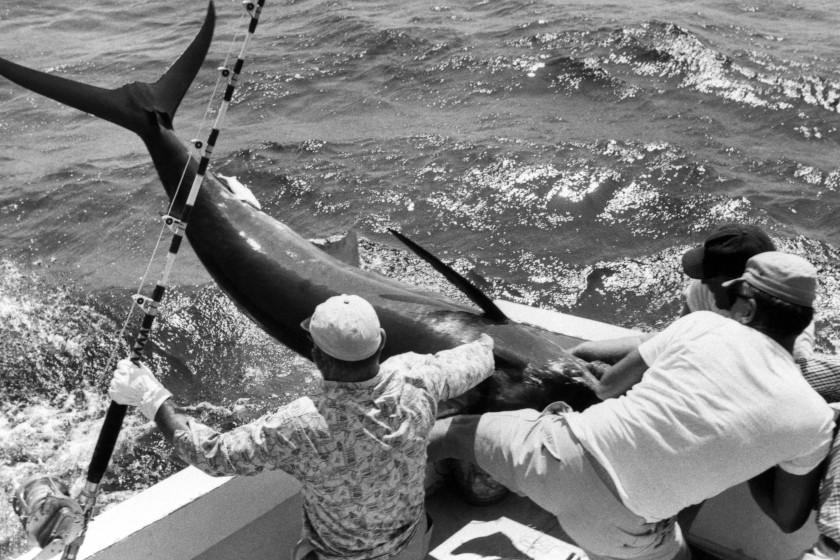
IGFA via Getty Images
Even though marlin fishing is arguably more popular than ever, both deBeaubien and Amorim's records may stand for many years to come. There's a combination of factors contributing to this, but one of the first ones is simply that granders (fish over 1,000 pounds) are quite rare. There are dedicated saltwater anglers who have fished their whole lives without ever tangling with one.
Even if you do get one on the line, everything must go right. You better hope the fish doesn't throw the hook, spool your reel, or simply snap your line on a powerful run. Easier said than done when we're talking about a fish this size. The odds are against most anglers; it's just simple math. In fact, if you look at a website like Grander Watch, you'll notice reports of 1,000-pound billfish of any species, including swordfish, white marlin, black marlin, striped marlin, and especially blues, seem to be decreasing with each passing year.
Unfortunately, that's not a coincidence, and it's the other reason why breaking these records becomes a little less likely with each passing year. Billfish populations are considered threatened in many parts of the world. Both the Atlantic and Pacific blue marlin are on the International Union for Conservation of Nature's "red list" of threatened species. It's mostly the commercial fishing operations that are being considered the greatest threat to the species. In fact, the IGFA has been a major player in the push to conserve marlin in the past twenty years. In 2008, the organization created an awareness campaign called "Take Marlin Off the Menu" that encouraged recreational anglers to release their marlin catches rather than bringing them back to the docks.
The IGFA didn't stop there. In 2012, they pushed heavily for the passage of the billfish conservation act, which prohibited the sale of most billfish or billfish products in the United States. This bill was amended further in 2018 to include the waters around Hawaii.
The U.S. isn't the only country to start stepping up billfish conservation. Costa Rica has completely prohibited the harvest of all marlin or sailfish. All billfishing there is catch-and-release only. In 2008, they took things a step further by prohibiting anglers from even pulling a smaller billfish from the water from photos. Marlin can still be caught, but all photos must be taken with the fish still in the water at boat side before they are released. Costa Rica has also eliminated commercial fishing of sailfish. The country ultimately decided the fish were more valuable as a magnet for tourist anglers than they were on food markets, which probably isn't a bad thing.
It seems like the attitudes of many anglers has changed too. Big marlins are still harvested every year, but the days of famous fishermen like Ernest Hemingway posing for photos with five or six billfish hung up at the docks seem to be over. It's not that anglers back in the day were in the wrong when they harvested billfish the way they did fifty or sixty years ago. However, we do know a little bit more these days about the long-term effects of over-harvesting. And many modern anglers seem to recognize they need to do their part in the preservation of the species.
Because you cannot get an accurate weight on a marlin without killing it first, the odds of a new record go down with the reduced number of harvests every year. We're not saying it's entirely impossible for either the Atlantic or Pacific records to fall, but it is undoubtably going to be more challenging in the future. While records are made to be broken, it seems most anglers are quite content with deBeaubien and Amorim continuing to hold the record for now. At least until populations of these magnificent fish can be given time to rebound.
For more outdoor content from Travis Smola, be sure to follow him on Twitter and Instagram For original videos, check out his Geocaching and Outdoors with Travis YouTube channels.
